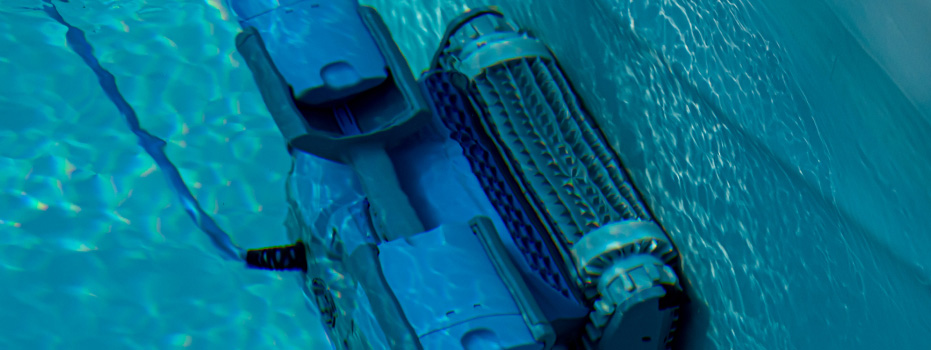Why You Should Take Care Of Fibreglass Pool Stains Promptly
If you own a fibreglass pool, then you'll eventually notice stains forming. It could be as little as a month before you notice a stain starting to form around the water line. If you leave it alone, you'll find that this stain doesn't go away by itself.

At this point, you could be wondering if your pool maintenance was off in any way. This isn't your fault in any way, but something that naturally happens with fibreglass pools. If you own a fibreglass pool, it will stain eventually. And when this happens, you should get rid of the stain immediately.
Here's What You Should Know About Fibreglass Pool Stains:
Fibreglass Pool Stains Aren't Unusual
One of the advantages of getting a fibreglass pool, especially one that is gel-coated, is that it isn’t porous in the same way plaster pools are. This means that your pool won’t become rough or etched. Fibreglass feels smooth but is susceptible to the growth of algae.
As the surface is super slick, stains can firm as well. Even a fibreglass pool with a gel coat will stain easily.
Stains Aren't Random
There are several things that could cause stains on the surface of your fibreglass pool. The chemicals in your pool could be imbalanced or there could be high levels of metal in it. Sometimes, foreign objects can also stain fibreglass pools. Sunblock and swimmers who use a lot of body oil can also cause stains to form in your fibreglass pool.
The Importance Of Water Balance
You’ll need to test your water balance regularly if you want the optimal standards related to water balance to be maintained. The pH balance of your fibreglass pool should be between 7.2 and 7.4.
The total alkalinity of your pool water needs to be between 80 and 100 parts per million. The chlorine in your pool should either be at or above 1 part per million. And the calcium hardness of your pool needs to be between 200 and 400 parts per million.
Should any of these numbers fall out of the optimal range, then stains can develop in your pool. If you want to prevent pool stains from forming, then you’ll need to check the water balance of your pool regularly and add chemicals as needed.
Check out our guide on what you need to know about pool renovation!

What Causes Stains In Fibreglass Pools?
Your pool can either be stained by organic stains or inorganic stains. Let’s first look at what the organic stains are.
Organic Stains In Fibreglass Pools
There are two kinds of organic contaminants that can cause your fibreglass pool to stain. These include:
Leaves And Pollen
Usually, organic stains are caused by leaves as well as pollen. Organic stains aren’t difficult to clean. You can just use your regular pool brush to clean these stains. Sometimes, however, organic stains can be slightly sticky and difficult to just brush off. In such cases, you may think this is an inorganic stain.
But organic stains like these disappear eventually within a few weeks or a month. If it doesn’t come out in an easy way, don’t just assume that the stain is organic.
To prevent organic stains from forming in your fibreglass pool, ensure that you keep your pool clean. Clean out any leave or pollen that falls in your pool, especially during Autumn.
Prep your fibreglass pool for a fantastic summer with these tips and guidelines here!
Algae
Algae can also cause organic stains to form in your pool. This is the result of low levels of free chlorine. The colour of algae can be yellow, green, as well as black. Getting rid of algae requires you to shock your pool.
In order to determine that you’re dealing with stains caused by algae, conduct an OCLT. Also known as an Overnight Chlorine Loss Test, you’ll need to add chlorine to your fibreglass pool water in the evening. Then, compare the reading of free chlorine in the morning to what it was the night before. If the amount of free chlorine falls by at least 2 ppm or more, then it’s an algae infestation.
You can spot green algae floating on the water sometimes. If you see yellow or even mustard algae, then you’ll need a lot of chlorine to get rid of it. You can spot black algae as well, in the form of black spots on the walls and the bottom of the pool.

Inorganic Stains In Fibreglass Pools
What causes inorganic stains include heavy metals such as iron, copper and magnesium. Stains can be formed after chlorine is added to the water. If the pH level increases sharply, then the metals in the pool will be oxidized, causing stains to form.
If you notice a stain that is light green, then this means that copper could be the culprit. Copper has a tendency of turning the colour of the water into a shade of green. Should the stain be yellow or brown, then this indicates that iron is causing the stain. In the case of magnesium, you’ll see a black stain developing.
Stains caused by iron look yellow when they appear on the steps and the walls of a fibreglass pool. Heavy metals could have found their way into your pool if you used water from a well or a borehole to fill your pool.
Minerals can also be deposited as a result of using pool chemicals that come with added metals. An example of this is an algaecide that is copper based. If the metal fittings in the pool are corroding, then this could leave behind stains as well.
You’ll need to use a stain remover with the right chemical formula, in order to get rid of inorganic stains from your fibreglass pool. Usually, however, it’s well water that causes inorganic stains to form.
Here are the types of pool covers to consider to keep your home pool clean and safe!
Conclusion
If your fibreglass pool starts to develop a stain, and it eventually will, then you’ll need to get rid of the stain immediately. If you don’t, then the stain can look more pronounced and will be more difficult to clean eventually. Use this guide to learn what causes fibreglass pools to stain, as well as what you can do to prevent stains from forming.




